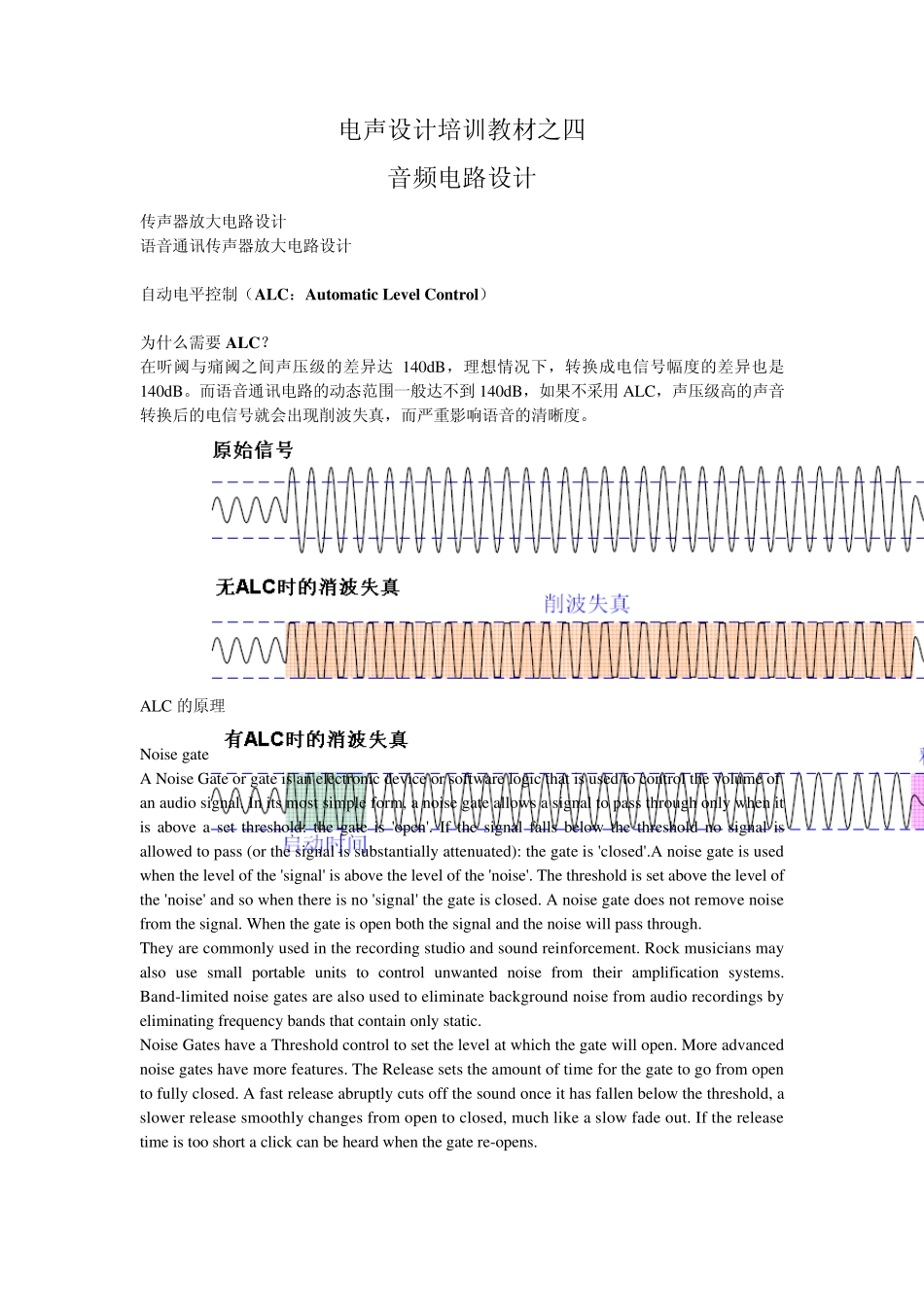电声设计培训教材之四 音频电路设计 传声器放大电路设计 语音通讯传声器放大电路设计 自动电平控制(ALC:Automatic Level Control) 为什么需要ALC? 在听阈与痛阈之间声压级的差异达140dB,理想情况下,转换成电信号幅度的差异也是140dB。而语音通讯电路的动态范围一般达不到 140dB,如果不采用 ALC,声压级高的声音转换后的电信号就会出现削波失真,而严重影响语音的清晰度。 ALC 的原理 Noise gate A Noise Gate or gate is an electronic device or software logic that is used to control the volume of an audio signal. In its most simple form, a noise gate allows a signal to pass through only when it is above a set threshold: the gate is 'open'. If the signal falls below the threshold no signal is allowed to pass (or the signal is substantially attenuated): the gate is 'closed'.A noise gate is used when the level of the 'signal' is above the level of the 'noise'. The threshold is set above the level of the 'noise' and so when there is no 'signal' the gate is closed. A noise gate does not remove noise from the signal. When the gate is open both the signal and the noise will pass through. They are commonly used in the recording studio and sound reinforcement. Rock musicians may also use small portable units to control unwanted noise from their amplification systems. Band-limited noise gates are also used to eliminate background noise from audio recordings by eliminating frequency bands that contain only static. Noise Gates have a Threshold control to set the level at which the gate will open. More advanced noise gates have more features. The Release sets the amount of time for the gate to go from open to fully closed. A fast release abruptly cuts off the sound once it has fallen below the threshold, a slower release smoothly changes from open ...


